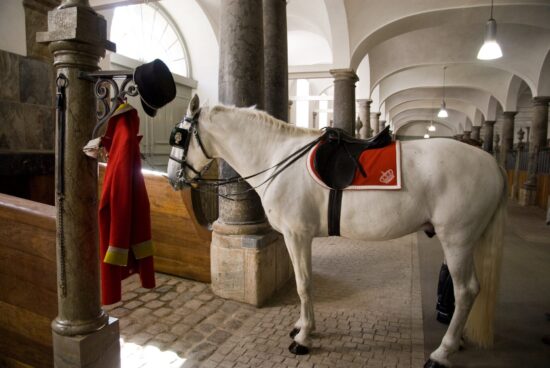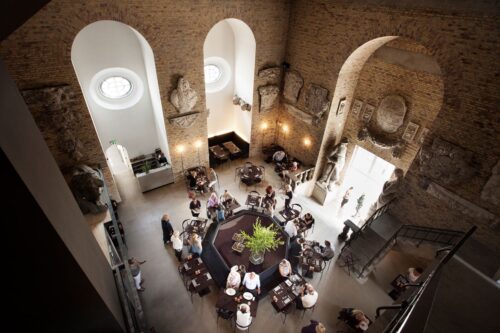Christiansborg Palace
Christiansborg Palace is probably the best way to start your Copenhagen tour. A visit to a nation’s capital is always a challenge. So many sites to see, so many things to do, and so much ground to cover. If you have to start from somewhere it’s always good to go to the center of the historic district. In Copenhagen’s case, this would be the islet of Slotsholmen (Castle Islet) and in particular Christiansborg Slot.
Christiansborg Palace dominates the islet of Slotsholmen with its sheer size and is actually where it all started for Copenhagen. Christiansborg (Literally Christian’s Castle) was not always Christian’s (Christian VI of Denmark ruled Denmark and Norway from 1730-46 with his main accomplishment as a king being the construction of the palace) and was historically not always a palace. When it all started for the city this place was a castle.
A defensive castle that put the small fishing harbor of København on the European map. In the year 1157 Valdemar den Store (the Great) had just managed to establish himself as the sole ruler of Denmark. The young king gave Haven along with its surrounding villages to his trusted foster brother Absalon. A year later with the king’s help once again Absalon became the Bishop of Roskilde, the most important city of the Danish kingdom at the time.
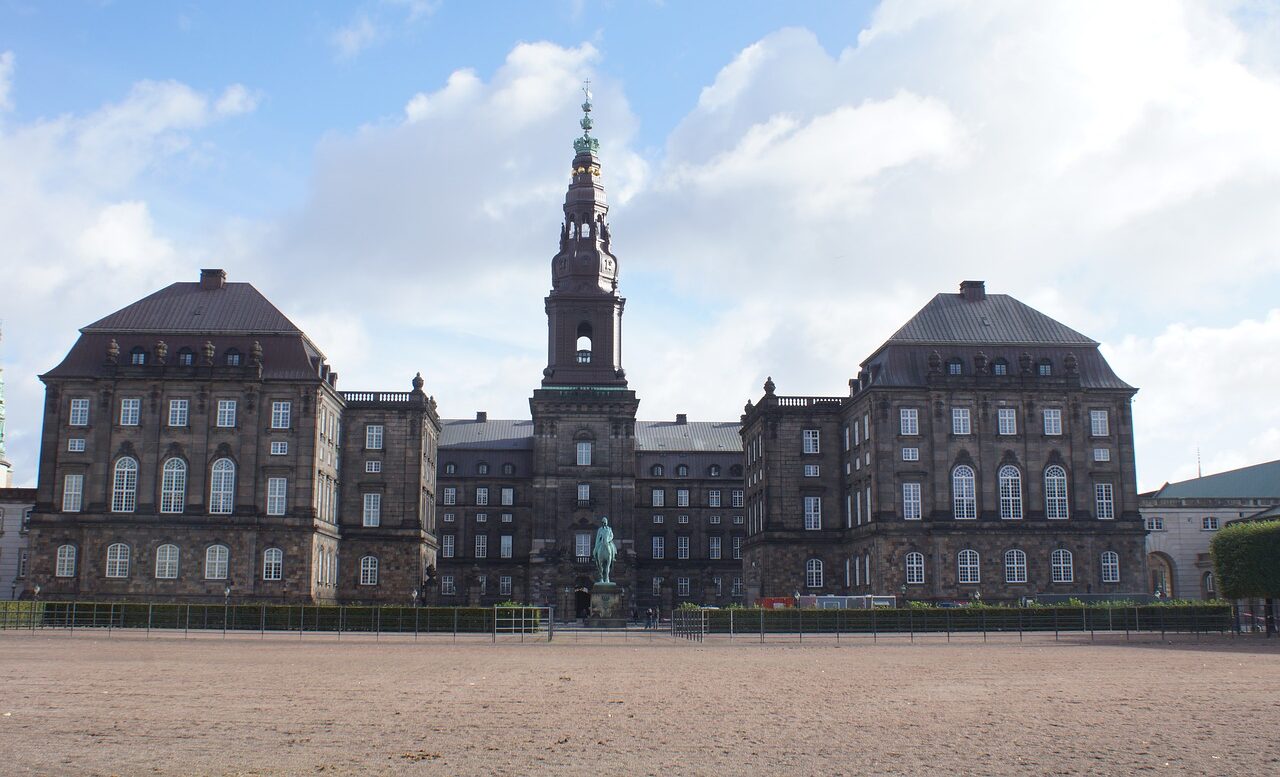
Absalon was very keen on his new possession of Slotsholmen due to the proximity of its shore to the other side of the sound and the potential it unleashed for the monitoring or even control of its naval traffic. To do that Absalon needed a castle, so in 1167 he went on with the construction of the first fortress surrounded by a thick wall, about 6 to 8 meters high for protection against the raiding pirates of that era. The castle provided the needed protection for the fishing harbor that quickly evolved into a trading village, a small but growing town, and eventually a strong city that would host the Danish King.
The castle was completely razed to the ground by the Hanseatic League in 1368 and rebuilt sometime before 1417 by the Bishopric of Roskilde. After 1417 King Erik of Pomerania took possession of the castle and 30 years later the castle became the official residence of the Danish King for the first time in history around 1443 ( Christopher III). Around the year 1500 Blåtårn, the blue tower was added by King Christian I.
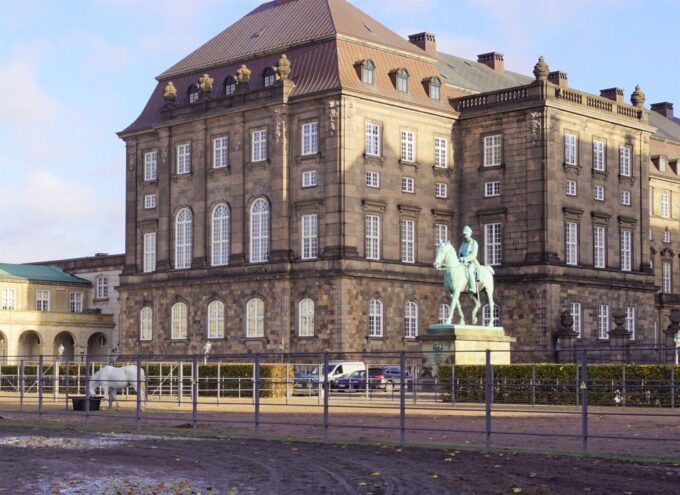
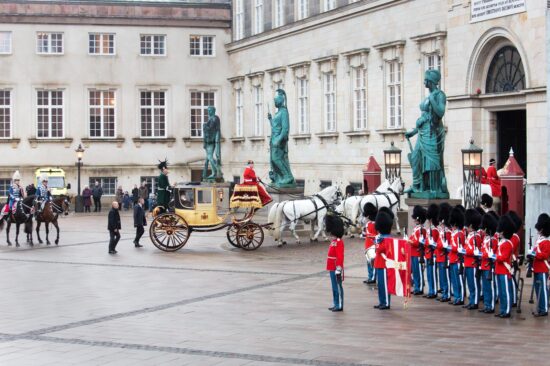
It would serve as a notorious prison for high-profile detainees for more than 200 years. In the year 1700, Frederick IV filled up the ramparts and extended and elevated its wings up to 5 stories high. The old “backbone” could not support the increased weight so the whole castle started to crack and show signs of an imminent collapse right after its expansion.
Copenhagen was trying to recover from the horrific fire of 1728 that had burned down a great part of the city when Christian VI of Denmark, who had just ascended to the throne (1730), decided that as the city was being rebuilt, so should the royal residence. The castle was completely demolished in 1731 to make way for the first version of the Christiansborg Palace. Work started in 1733 and lasted until its official inauguration in 1766, twenty years after Christian VI’s death. The new rococo palace, one of the largest in Europe at the time would serve its purpose until it was destroyed by another fire in 1794.
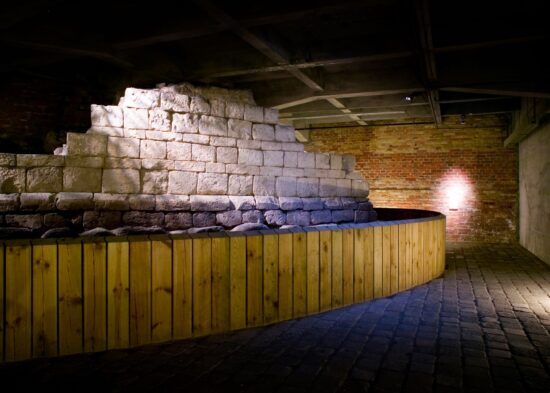
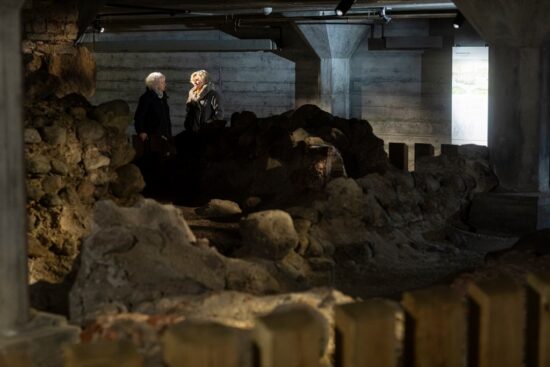
The second version of the palace took shape during the first quarter of the 19th century. It was a classicist edifice with ancient Greek and Roman elements which after the year 1828 served mostly as a place of entertainment for the royals. When the constitution changed in 1849, the palace became the house of the Danish Parliament.
The last of the fires happened in 1884, three days before the opening of the parliament. The building we see today serves as the Seat of the Danish Parliament, the Prime Minister’s Office, and the house of the Danish Supreme Court. It was built between 1906 and 1928 in Neo-Baroque style spread out in three wings. The lower parts of the facades’ masonry are covered with granite stone from all the municipalities of the country and Greenland.


They are decorated with granite masks of prominent Danish figures, that cover the space above every window of the ground floor. It was during the excavations for the 105 meters high tower in the middle of the courtyard that the ruins of the first castle of Absalon were discovered and were later preserved and made available to the public.
Some parts of the palace are used by the royal family. The palace was initially designed to be divided between the 95 rooms on the west side that were destined for the royal residence and the eastern side towards the harbor being set up for the politicians. Today only a part of the west wing serves as the Royal Reception Rooms and is of course decorated accordingly in historic style and rescued works of art from the two previous palaces.
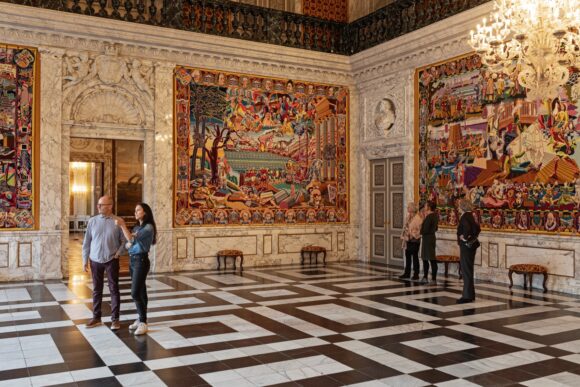
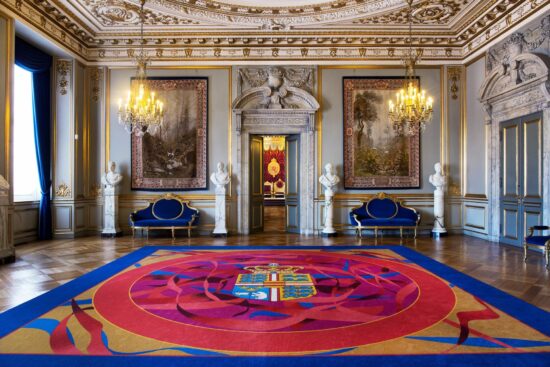
Today a combination ticket to Christiansborg Palace gives you the chance to a free guided tour of all the premises, which means you will get access to the Royal Reception Rooms (including the Great Hall with the tapestries), the Royal Kitchen, the Ruins and the Royal Stables, the Palace Chapel and the Parliament with the same ticket. Access to the viewing platform of the highest to this day tower of the city is free of charge and offers great views of the historic center or even a chance to give yourself a culinary experience in its popular Restaurant Tårnet.
